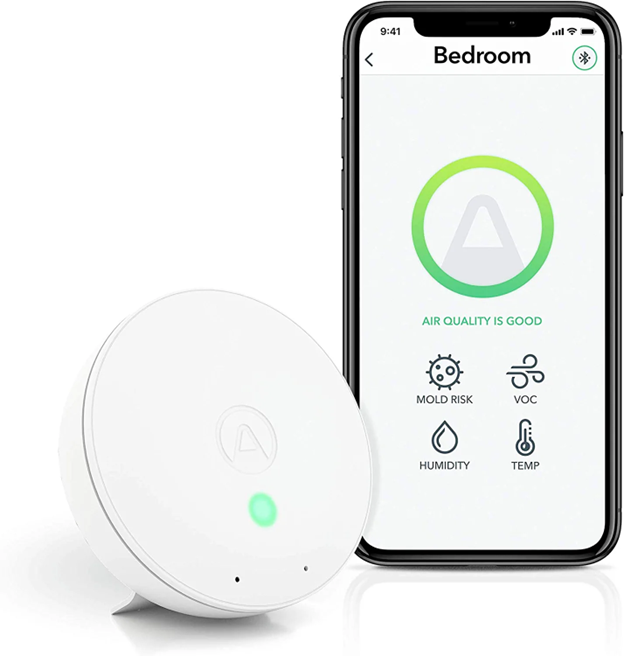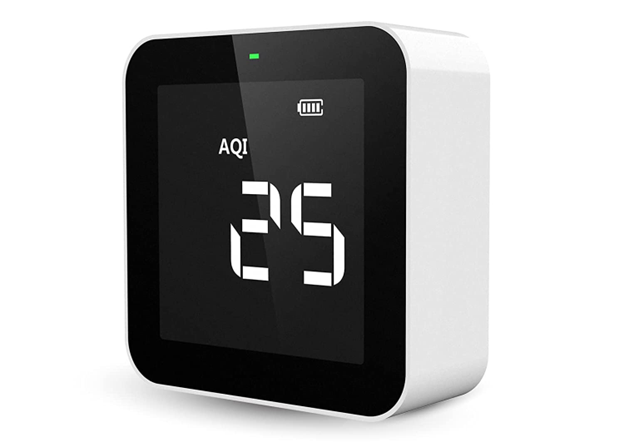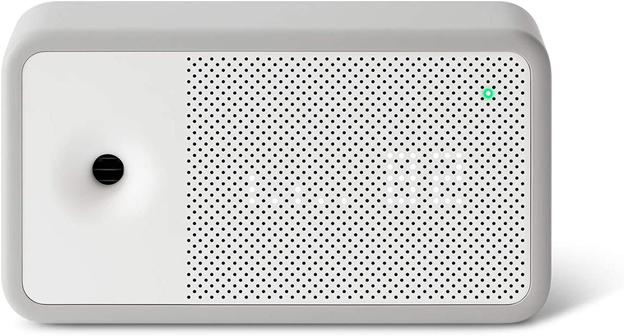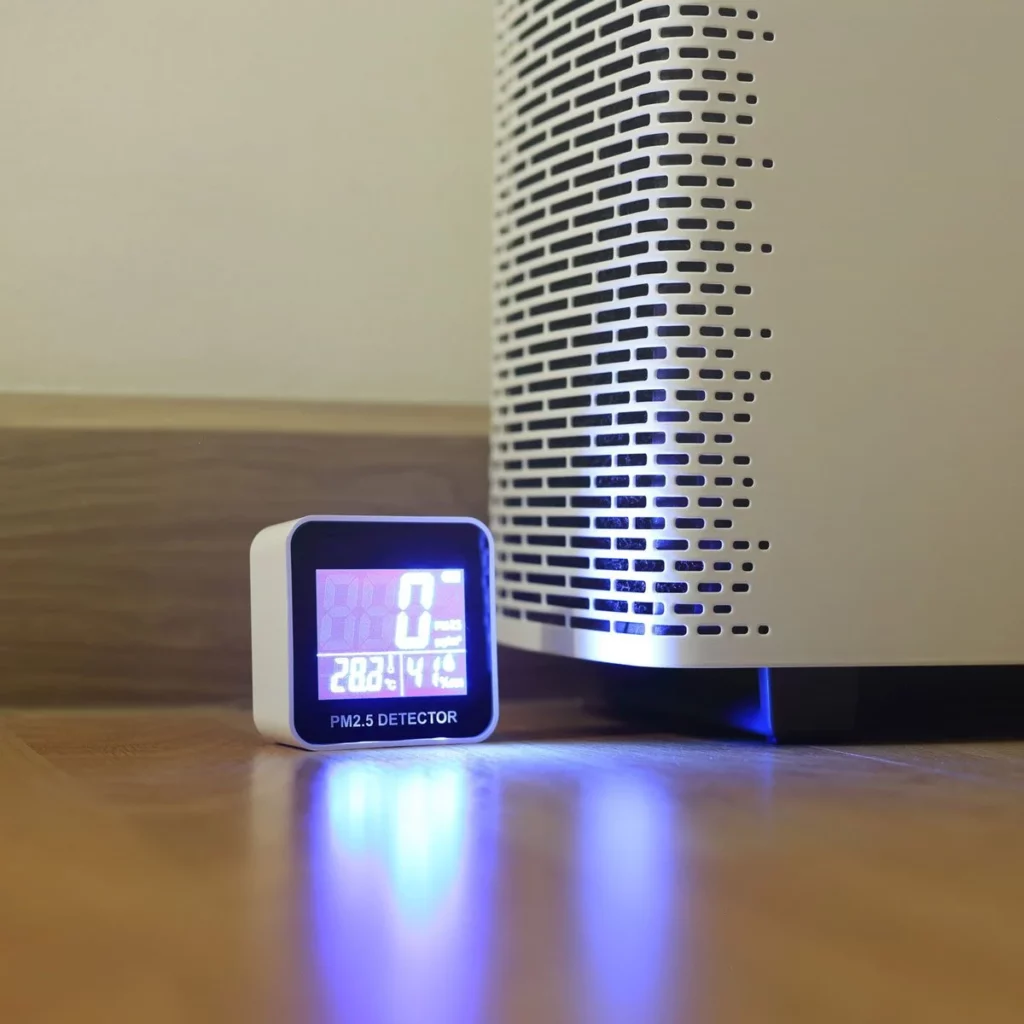The Best Indoor Air Quality Monitors In 2023 – An indoor air quality monitor is a practical appliance to have if you have allergies to typical household allergens like pollen or dust or if you just want to know what you are inhaling. The most effective air quality monitors are simple to install and track a wide range of contaminants, from carbon dioxide to volatile organic compounds and more.
On the Linquip website, among the many options available to you, you will find all the information you need to know about the Indoor Air Quality Monitors, as well as information regarding this marketplace. You can count on Linquip to provide you with as much general and reliable information about this topic, whether you’re a professional or a customer looking for a proper company. We recommend you review a list of all Indoor Air Quality Monitors available in Linquip.
We would be delighted to provide you with more information on how we can help you generate revenue within your industry. Don’t hesitate to contact us if you have any questions! With Linquip’s Solutions for Each Company Level, you will be able to upgrade the capabilities of your organization in order to gain a competitive edge by taking advantage of a wide range of options to enhance your organization’s performance. If you are looking for the simplest or the most sophisticated marketing and advertising package for your business, we can help you ensure that your company gets as many customers as possible to grow your business.
The Best Indoor Air Quality Monitors In 2023
1. Airthings 2960 View Plus Radon Air Quality Monitor

Specifications
| Dimensions | 6.69 x 3.54 x 1.18 inches |
| Weight | 12.7 ounces |
| Power Source | Battery |
| Smart Device Compatible | Yes |
Product Description
Particulate matter, carbon dioxide, radon, volatile organic compounds, humidity, temperature, air pressure, and pollen are just a few of the major factors that may be measured with this air quality sensor. Radon is very dangerous, so you’ll get warnings on your phone if there are any problems. The device also features a handy display. Simply waving your hand in front of the device will display the information you’ve set it to show.
Also, the View Plus may serve as a central hub for all of your other Airthings home monitoring devices. It communicates with your WiFi network by establishing a connection to it. Thankfully, there’s no complicated wiring involved, and setup is quick and simple. The artwork is suitable for both wall display and tabletop use. The app allows you to track the quality of the air in your house over time and receive notifications and information about it.
Many people believe the price of this air quality monitor is justified by the assurance it provides. Since radon is a proven lung cancer risk, it is important to check for it whenever you check the air quality in your house. The bundled 6-pack of AA batteries can power this device for up to two years. The device helpfully notifies you when new batteries are needed.
2. uHoo Smart Air Monitor

Specifications
| Dimensions | 3.35 x 3.35 x 6.38 inches |
| Weight | 7.4 ounces |
| Power Source | Electric |
| Smart Device Compatible | Yes |
Product Description
Yes, the uHoo Smart Air Monitor is somewhat pricey to begin with. Temperature, humidity, carbon dioxide, air pressure, total volatile organic compounds, particulate matter, and carbon monoxide are just a few of the variables it monitors. Radon monitoring is the only other item we wish it monitored.
The app for smartphones is one of the most useful tools available. Both the levels and a color-coded scale that rates them as good, fair, awful, or severe are displayed. That makes it possible to quickly absorb and comprehend the data with minimal effort. You may access the same data and tracking on your personal computer. Although an uHoo premium membership is required to use the app’s main features, the first year is free. The device has to be plugged in, but unlike battery-operated monitors, it won’t die unexpectedly.
3. Airthings Wave Mini Indoor Air Quality Monitor

Specifications
| Dimensions | 3.14 x 3.14 x 1 inches |
| Weight | 4.8 ounces |
| Power Source | Battery |
| Smart Device Compatible | Yes |
Product Description
The Wave Mini is a cheap and compact air quality monitor that detects dangerously high concentrations of volatile organic compounds (VOCs), relative humidity, and temperature (so you can make changes in your home to prevent mold and other hazards). This monitor is an excellent option if you want to start keeping track of the air quality in your house or if you want to add it to an overall system, but its monitoring capabilities aren’t as thorough as our top overall recommendation (the bigger version, also produced by Airthings).
Your own personal readings, as well as regional pollen counts, are all available in the Airthings app. The pollen count is not reflected in the data from the real air quality meter. It’s cheap enough to place one in every room, which may be essential for very big rooms and for getting the most precise readings over the entire house as a whole.
4. ECOWITT WH0290 Air Quality Monitor

Specifications
| Dimensions | 5.04 x 4.49 x 3.31 inches |
| Weight | 14.8 ounces |
| Power Source | Battery, USB, and solar |
| Smart Device Compatible | No |
Product Description
When it comes to power, the ECOWITT WH0290 is your best bet. Rechargeable batteries (two are provided in the package) can be used, as can the USB cable or solar panels (charging the solar panel outdoors). The screen will let you know how much battery life is left so you can schedule a recharge accordingly. With constant usage, the batteries will last around two weeks.
Particles, temperature, and humidity are all measured by the air quality meter. It does not detect mold but will warn you if the air quality is dangerously low. The Air Quality Index (AQI) is displayed using a straightforward color-coded scale.
5. Temtop M10 Real-Time Air Quality Monitor

Specifications
| Dimensions | 3.2 x 3.2 x 1.22 inches |
| Weight | 7.05 ounces |
| Power Source | USB and battery backup |
| Smart Device Compatible | No |
Product Description
The Temtop air quality monitor’s cutting-edge monitoring technology maintains tabs on a wide variety of possible dangers while its sleek, futuristic design fits in with any cutting-edge home system. The total AQI is shown in a color-coded scale from green to yellow to red, indicating acceptable, intermediate, or harmful levels of temperature, humidity, volatile organic compounds, and particulate matter.
Altering the unit is also required if you want to cycle between its different measures. It has a lithium battery built in and can be charged using the USB cable provided. The battery only has a six-hour life span on a full charge, so unless you are constantly switching environments, it is advisable to have it connected to a power source through USB. However, when you go to a new place, you’ll need to adjust the calibration.
6. Awair Element Indoor Air Quality Monitor

Specifications
| Dimensions | 6.06 x 1.8 x 3.33 inches |
| Weight | 1.3 pounds |
| Power Source | Electric |
| Smart Device Compatible | Yes |
Product Description
This Awair unit is compatible with Google Home and Alexa devices, and it can provide you with immediate feedback; it monitors the most important risks and metrics, such as temperature, humidity, carbon dioxide, volatile organic compounds (VOCs), and particle matter. An overall AQI is also included.
Keep in mind that the unit’s real display is illegible. Logging onto the app or using your smart home device will inform you of the readings, which you can then utilize to your advantage. Good news: you can easily monitor the evolution of your data with a wide variety of useful tools and reports. Certain monitoring tasks can be given more priority, and data can be inspected more closely at specific times of the day.
7. Aiment 3-in-1 Lightweight Portable Air Quality Monitor

Specifications
| Dimensions | 3.15 x 2.08 x 0.71 inches |
| Weight | 3.84 ounces |
| Power Source | Battery |
| Smart Device Compatible | No |
Product Description
This portable air quality meter may be used everywhere you go. Really, it’s a bag clip with on/off functionality. In addition to temperature and humidity, it can detect and record levels of carbon monoxide. The current temperature, humidity, and CO levels in ppm are all displayed on the screen (PPM). It uses color coding to help you immediately determine whether you are getting close to potentially hazardous levels. In addition, it can sound an alarm to alert you to potential danger.
Reports may be generated, and the monitor can be synced with a mobile device, making it convenient for on-the-go use. The battery can only handle around 30 hours of continuous operation before it has to be replaced, so you’ll have to keep it charged often. If you need to keep tabs on the air quality in a specific location, this model is an excellent option, but it’s not the best for continuous monitoring at home.
8. Langkou 8-in-1 Air Quality Monitor

Specifications
| Dimensions | 3.54 x 3.54 x 1.96 inches |
| Weight | 7.1 ounces |
| Power Source | USB and battery backup |
| Smart Device Compatible | No |
Product Description
The Langkou Air Quality Monitor has a big LED screen that displays environmental conditions such as temperature, humidity, particulate matter, carbon dioxide, and battery life. The unit itself is silver on the rear and black on the front, with bright LED numerals and characters for good readability even in low light. As the foundation is substantial, it will never topple over accidentally. The screen measures at 2.8 inches across and takes up nearly the whole front panel of the device.
The item has a USB cord and a backup battery that can keep it running for 10 hours. While it doesn’t keep an eye on every potential threat in the air, it does offer a wealth of information in a straightforward layout. Unfortunately, there is no night setting to reduce brightness before sleeping. The front-facing push button activates the unit’s audio alarm and serves as the device’s on/off switch.
Considerations for Purchasing Air Quality Monitors
According to the data at hand, the market for public air quality monitoring is still in its infancy. As a result, many claims concerning precision are either obviously untrue or have not been reviewed by scientists or an official regulatory board. Keeping this in mind, it’s important to know what to look for in an air quality monitor:
Substance of Interest
A perfect world is one in which an air quality sensor can detect and report on the presence of any harmful substances in the air. Air quality sensors in the actual world, alas, need to be tailored to detect only a few particular pollutants. While it is never a secret as to what contaminants an air quality monitor records (since they are virtually always publicly mentioned in the specifications and advertisements), you may find yourself overwhelmed by a few new terminologies. The following is a brief glossary of terms related to air pollution to help you get started:
PM: PM refers to “particulate matter” and measurements of it are capable of telling you how many liquid or solid particles of varied sizes are in your air. After the “PM” is the particle size in microns. PM2.5, for instance, measures the concentration of airborne particles with a diameter of 2.5 millimeters or less. The developers of the Atmotube state that PM1 particles are often emissions from industries and automobiles, PM2.5 particles normally come from fires and combustion, and PM10 particles are from pollen, mold, and tiny fragments of old plants and insects. Many portable air purifiers, like the Wynd Plus personal air purifier with air quality sensor, monitor PM2.5.
Air Quality Index, or AQI for short, is a well-known but increasingly antiquated way of gauging environmental pollution. The Air Quality Index (AQI) is a simple metric that reports the highest number measured for a wide range of pollutants. It doesn’t matter if only one pollutant is excessive or if several are, only the top one is getting reported. Still, the data is traditionally known and the translations for each pollutant might still be valuable. A helpful AQI calculator may be found online for anyone who likes to experiment with the method.
VOCs: These are “Volatile Organic Compounds” and mostly arise from human sources. The EPA advises that commonplace items like cleaning supplies, construction supplies, and office machinery can all be potential vectors for these toxins. They have also discovered that indoor environments typically contain significantly greater quantities of these contaminants. Because of volatile organic compounds, we emphasized the need for ingredient-based floor cleaners as a top pick. The Dyson Purifier Humidify+Cool Formaldehyde is just one example of a high-end air purifier designed with sensors to detect and eliminate these toxins, which are released into the air whenever we use new or refurbished furniture, gadgets, etc.
Application in Science
Always research the product’s reputation among industry professionals before making a major purchase like an air quality monitor. Doing so can be as easy as searching for the product on Google followed by “site:.edu” or “site:.gov” followed by the product name, or it can involve digging through the “Air Quality Sensor Performance Evaluation Center” (AQ-SPEC) website.
After putting air sensors through their paces in the field, AQ-SPEC compiles a wealth of information for users. While AQ-SPEC findings do not constitute an endorsement of any particular monitor, manufacturers can get their products evaluated at no cost as long as their sensors are considered “low-cost” and fulfill minimum selection requirements. Submitting a sensor for an AQ-SPEC report shows confidence in the quality of the product, hence manufacturers should do so.
All of the air quality monitors on our list include a thorough AQ-SPEC report. These reports, while necessary, can be somewhat technical and academic, making them difficult to understand for the average reader. I’ve done my best to extract the most important information from these papers, but feel free to read them in full if you’re so inclined.
Precision and Reliability
At first look, accuracy and consistency in an air quality monitor’s readings might be easily confused. You may be able to deduce from a recent study conducted at the Berkeley Lab that although precision may be challenging to achieve, these devices will still be important additions to your household because of their reliability.
The regular calibration of laboratory equipment is a contributing factor. Consider the lowly pH meter as an illustration. I used to have to calibrate this equipment with unique liquid solutions almost every time I used it in the lab. Now picture yourself at home, calibrating an air-measuring device. Although inexpensive calibration looks to be on the horizon, this does not guarantee that it will be simple or accurate when performed by the typical individual.
Therefore, when precise calibration is not possible, we must anticipate a degree of error. This may or may not be an issue, depending on what is being measured. Even while your home thermometer is probably wrong by around 1 degree, it is still accurate enough to notify you that you have a fever. The trick is to find a solution that provides sufficient accuracy for your needs.
Consistency is maybe even more crucial. While it is true that some consumer-grade air quality monitors have a bias, especially after being operated on for numerous days, if that bias is constant we can still acquire incredibly important information. For instance, you’d know there was an issue if your Carbon Dioxide measurement shot much up from the norm.
FAQs about Indoor Air Quality Monitors
In What Range Do Prices For Air Quality Sensors Fall?
The price of an air quality sensor typically ranges from $80 to several hundred dollars. Depending on their features, laboratory-grade air quality monitors might easily cost several thousand dollars. The costs of frequent upkeep and calibration for such sophisticated machinery may add up quickly. Fortunately, our top picks in air quality monitors have been put to the test against the gold standard in monitoring equipment, and they’ve held their own.
Does Mold Show Up On An Air Quality Monitor?
You can use an air quality monitor as a mold detector, but it won’t really inform you if mold is present. PM10 sensors are commonly used to detect molds, but they may also pick up on other particulate things like pollen. For this reason, a mold spore can be detected by an air quality monitor designed to test for PM10 particles, but the system will not be able to identify the spores as mold.
How Can Air Quality Be Effectively Measured In Dusty, Industrial Settings?
Cleaning up dust promptly is the greatest approach to keep an eye on air quality in dusty industrial spaces. You need an air purifier rather than an air quality monitor if you can really see that there is an issue with the air quality. We’ve covered air purifiers for the home and office, but I have a hunch that many of them would be just as effective in a smaller industrial space.
Download PDF for The Best Indoor Air Quality Monitors In 2023
You can download the PDF format of this post from the link provided here.
Buy Equipment or Ask for a Service
By using Linquip RFQ Service, you can expect to receive quotations from various suppliers across multiple industries and regions.
Click Here to Request a Quotation From Suppliers and Service Providers
Read More On Linquip
- The 8 Best Hand Saw
- The 6 Best Industrial Sewing Machine
- The 8 Best Pliers + Buying Guide
- The 9 Best Infrared Thermometers
- The 8 Best Nail Gun for Framing
- The 9 Best PLA Filaments
- The 10 Best Rivet Tool
- The 10 Best Wire Tracers + Purchase Factors
- The 10 Best Inspection Cameras + Buying Advice
- The 10 Best Staple Guns for Upholstery + Buying Guide
- The 7 Best Clamp Meters + Buyer Guide
- The 10 Best Large 3D Printer
- The 7 Best Belt Sander
- The 10 Best Electric Chainsaw + Buying Guide
- The 9 Best Laser Level + Buying Guide
- The 10 Best Laser Measures + Guide for Selecting



